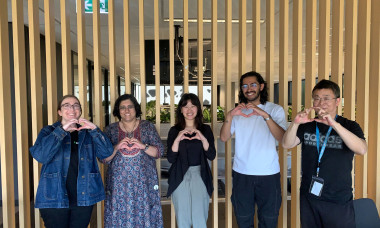6 interesting stats from the Voice of VET RTO Industry Australia Report 2021
Australia’s Registered Training Organisations had a lot to say in this year’s Voice of VET Report. Here’s three things RTOs say have changed (and three things that haven’t).
ReadyTech’s Voice of VET RTO Industry Report 2021 contains a lot of interesting insights into the RTO market. Based on a survey of 328 RTOs with a combined footprint across all Australian states and territories, it collates these responses to reveal a range of views, opportunities and challenges.
One of the key themes of this year’s report was the resilience shown by RTOs as they planned for 2021. Embracing new market opportunities as well as digital transformation, there was a clear desire to move forward from the trials of Covid-19 in 2020 into a new era of change and growth this year.
But what were some other things about RTOs that changed? And what things stayed the same?
3 things that changed
60% of RTOs say they have been well supported by the Federal Government
The vocational education and training industry has typically been quite negative about levels of Government support. This year, RTOs did an about face in their perceptions, with 60% of the market saying they ‘strongly agree’ or ‘agree’ they were well supported during the Covid-19 crisis.
With a range of initiatives announced during 2020 to shore up Australian jobs and skills, including the JobKeeper initiative to support continued employment economy-wide and the JobTrainer package to support apprenticeships and training, RTOs felt positive about the support received.
Online training is now offered by 72% of RTOs, compared with 44% a year ago
Many RTOs began delivering online education and training out of necessity during 2020. With only 44% having adopted online learning by 2019 (in favour of traditional face-to-face), a much larger 72% slice of the market had made the shift for at least some learning by the end of 2020.
With more hands on, practical skills to deliver, the vocational education sector will be much less inclined to go 100% in on online training. However, with three quarters of the market now having changed their behaviours and understanding of online, blended learning may well take hold.
Compliance and regulation no longer dominate the challenges faced by RTOs
In the past RTOs have named compliance and regulation as the greatest burden they face in the delivery of education and training. However last year brought about a reduction in the number of RTOs who named it their main challenge, from 43% in 2019 to just 23% of the market in 2020.
Instead, a proliferation of other challenges has risen to the fore. These included funding cuts and reduced income (16%), enrolment, sales and marketing (16%) and new staff and staffing resources (16%). RTOs are now concerned about a wider selection of challenges than just compliance.
3 things that stayed the same
40% of Australian RTOs rely on a fee-for-service as their main source of funding
Pure student fee-for-service is the funding model relied on by 40% of the Australian RTO market for revenue, with different ways of capturing these fees during the student lifecycle including upfront payment, fee-for-service split payment and fee-for-service direct debit payments.
Government funding still plays a dominant role for surveyed RTOs. A 33% slice of providers surveyed relied on a combination of government funding and student contributions, while 10% said were fully funded by the government. Other funding models included employer or third party funding.
Approximately two thirds of RTOs have a turnover of less than $2 million
Small businesses continue to dominate the RTO landscape. In similar findings to 2019, 67% of private RTOs revealed they had an annual gross revenue of less than $2 million, classifying them as small businesses under current Australian Bureau of Statistics and Australian Tax Office definitions.
There are also larger players. Of the RTOs surveyed, 18% were earning $2 million - $5 million in revenue, 5% earned between $5 million - $10 million in revenue, and 4% said their revenue exceeded $10 million. The similarities with 2019 indicate this is representative of the market.
Providers expect international students to make up 14% of their cohorts
RTOs can be thankful they do not rely as heavily on the international student market as the higher education sector. International students made up just 12.1% of the students serviced by RTOs during 2020, down from 14.1% in 2019 due to the strict border restrictions associated with Covid-19.
The market is hopeful that a ‘return to normal’ in 2021 or beyond will see their international student numbers rebound to the same level as 2019. Of the RTOs surveyed, there was an expectation that international students would again make up 14.6% of student cohorts in the 2021 calendar year.
VET Industry Australia: VOICE OF VET REPORT 2021
Voice of VET (VOV) is an advocacy platform supporting the health of the Vocational Education and Training (VET) industry through the publication of quality independent research and content.
Download VOICE OF VET REPORT 2021 and gain insight into the status, value and concerns of providers, predominantly Registered Training Organisations (RTOs) and TAFEs.






